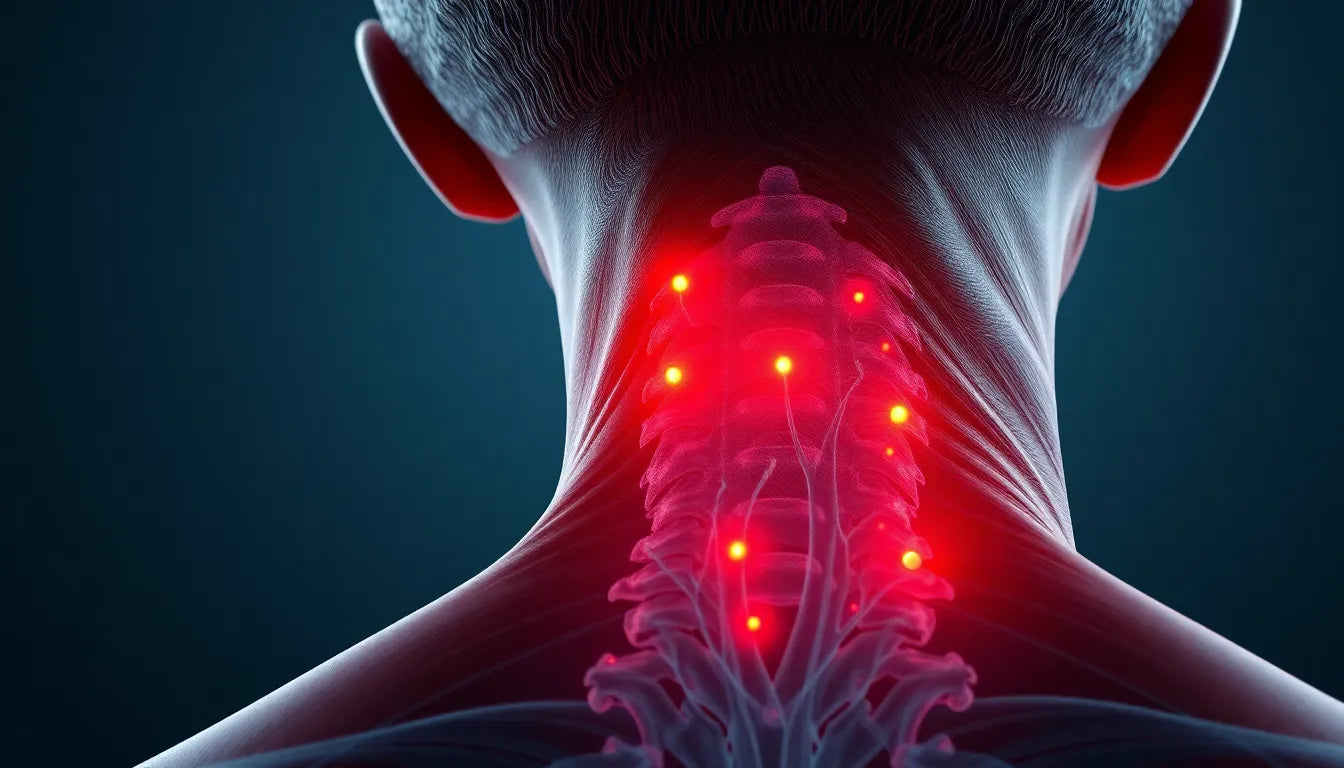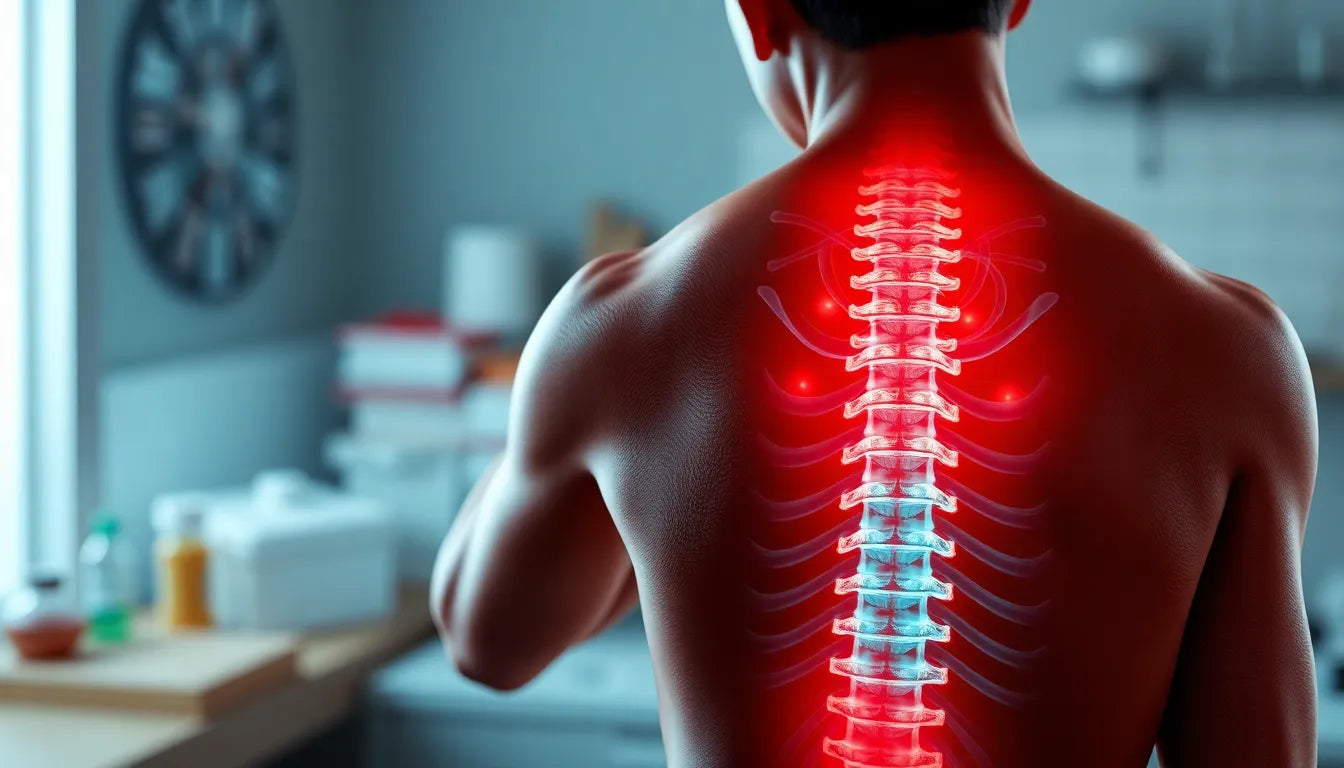In the realm of musculoskeletal health, the term "herniated disc in the shoulder" frequently emerges in online searches and patient inquiries. This phrase, however, is a common misconception that can lead to confusion and misinterpretation. The notion of a herniated disc residing in the shoulder is anatomically inaccurate, yet it remains a pervasive misunderstanding among many individuals seeking relief from shoulder-related discomfort.
Clarifying the misnomer
To set the record straight, a herniated disc cannot physically occur in the shoulder itself. Discs are located between the vertebrae of the spine, and the shoulder does not contain these structures. The term often mistakenly refers to herniations in the cervical (neck) or upper thoracic (upper back) regions of the spine. These specific areas, when affected by disc herniation, can lead to symptoms that manifest in the shoulder, creating the illusion of a "shoulder disc."
When a disc in the cervical or upper thoracic spine herniates, it can impinge on nearby nerves. This compression may result in pain, numbness, or tingling sensations that radiate into the shoulder, arm, or even hand. Thus, while the shoulder may be the site of symptoms, the root cause often lies in the spine.
The importance of accurate diagnosis
Understanding the true source of pain is crucial for effective treatment. Misdiagnosing a cervical or thoracic disc herniation as a shoulder issue can lead to inappropriate treatments that fail to address the underlying problem. This could delay recovery and potentially exacerbate the condition.
Correctly identifying the origin of pain ensures that patients receive the most suitable interventions, whether they involve physical therapy, pain management, or, in severe cases, surgical options. It also helps in preventing unnecessary procedures or therapies that target the wrong area, saving time, resources, and discomfort for the patient.
In summary, while "herniated disc in the shoulder" might be a common term, it is essential to recognize it as a misnomer. The real culprits are often cervical or thoracic disc herniations, and understanding this distinction is vital for proper diagnosis and treatment. By addressing the spine as the source of the issue, patients can pursue more effective pathways to relief and recovery.
anatomy of the cervical spine and its connection to shoulder pain
The cervical spine, located in the neck, consists of seven vertebrae labeled C1 through C7. These vertebrae are separated by intervertebral discs, which act as cushions and allow for flexibility and movement. When a disc herniates in this region, it can compress adjacent nerves, leading to symptoms that manifest beyond the neck itself. The nerves that emerge from the cervical spine extend into the shoulders, arms, and hands, explaining why a herniated disc in the cervical area can cause shoulder pain.
Similarly, the upper thoracic spine, which includes the upper back region, can also contribute to shoulder symptoms when a disc herniates. The thoracic spine is less mobile than the cervical spine but can still impact nerve pathways that affect the shoulder. A clear understanding of this anatomical relationship is crucial in diagnosing and treating what is often misperceived as a "shoulder problem."
recognizing symptoms and obtaining a diagnosis
Symptoms of cervical disc herniations can vary widely, but common indicators include neck pain, stiffness, and radiating pain into the shoulder. Patients may also experience numbness, tingling, or weakness in the arm or hand, depending on the specific nerves affected. It is essential to differentiate these symptoms from those caused by other conditions, such as rotator cuff injuries or arthritis, which also affect the shoulder.
Accurate diagnosis typically involves a combination of clinical evaluations and diagnostic imaging. An MRI or CT scan can provide detailed images of the spine, revealing the extent of the herniation and identifying the affected nerves. Additionally, nerve conduction studies may be used to assess the electrical activity of nerves and muscles, helping to pinpoint the source of the symptoms. The following table summarizes common symptoms and the corresponding affected nerve roots:
| Symptom | Affected Nerve Root |
|---|---|
| Neck pain | Cervical nerves (C1-C7) |
| Shoulder pain | C5-C6 |
| Numbness or tingling in the arm | C6-C7 |
| Weakness in hand grip | C8-T1 |
exploring treatment options for cervical disc herniations
Most cases of cervical disc herniation respond well to non-surgical treatments. Rest and physical therapy are often recommended to alleviate symptoms and promote healing. Physical therapy focuses on exercises that strengthen neck and shoulder muscles, improve posture, and enhance flexibility. Pain management strategies may include over-the-counter pain relievers, prescription medications, or corticosteroid injections to reduce inflammation.
Lifestyle modifications play a crucial role in managing cervical disc herniations. Patients are encouraged to adopt ergonomic practices, such as adjusting their workspace to maintain proper posture and reduce strain on the neck and shoulders. Stress management techniques can also help, as tension often exacerbates musculoskeletal pain.
In severe cases where conservative treatments fail to provide relief, surgical interventions may be considered. Anterior cervical discectomy and fusion (ACDF) is a common surgical procedure for treating herniated discs in the cervical spine. This surgery involves removing the damaged disc and fusing the adjacent vertebrae to stabilize the spine. While surgery can be effective, it is typically reserved for cases with persistent, debilitating symptoms.
Understanding the anatomy and pathophysiology of cervical and upper thoracic disc herniations is key to addressing shoulder-related symptoms effectively. By focusing on the true source of the problem, patients can pursue appropriate treatments and lifestyle changes that lead to lasting relief and improved quality of life.
Prevention and long-term management
Preventing cervical and upper thoracic disc herniations involves a proactive approach to spinal health. Ergonomic adjustments in daily life can significantly reduce the risk of disc-related issues. Ensuring that your workspace is set up to promote good posture and minimize strain on the neck and shoulders is crucial. Regular physical activity is also essential, as exercises that strengthen the neck and shoulder muscles can provide added support to the spine.
- Maintain a neutral spine position when sitting or standing for prolonged periods.
- Incorporate neck and shoulder-strengthening exercises into your regular fitness routine.
- Take frequent breaks to stretch and move if your job involves long hours at a desk.
- Use ergonomic furniture and tools to support proper posture.
- Manage stress through relaxation techniques, as stress can exacerbate musculoskeletal pain.
Ergonomic solutions for comfort and prevention
Ergonomic aids, such as those offered by Anodyne, can be integral to a conservative management plan for cervical disc herniations. These solutions are designed to adapt your workspace and improve your seating posture, thus alleviating and preventing pain. Proper ergonomic support can help maintain the natural curve of the spine, reducing the likelihood of disc herniations and associated symptoms.
Consider investing in ergonomic chairs that offer lumbar support, adjustable desks that allow for standing, and computer monitors positioned at eye level to prevent neck strain. These adjustments can make a significant difference in both comfort and spinal health.
Frequently asked questions
Can a herniated disc heal on its own?
Yes, many herniated discs improve over time with conservative treatments such as rest, physical therapy, and pain management. The body can often heal itself, reducing the herniation and alleviating symptoms.
How can I tell if my shoulder pain is due to a herniated disc?
If your shoulder pain is accompanied by neck pain, numbness, or tingling in the arm, it may be related to a herniated disc. Consult a healthcare provider for a proper diagnosis, as they can perform clinical evaluations and imaging studies to determine the cause of your symptoms.
When should I consider surgery for a herniated disc?
Surgery is typically considered when severe symptoms persist despite non-surgical treatments. If you experience significant pain, weakness, or loss of function that impacts your quality of life, surgical options such as anterior cervical discectomy and fusion may be recommended.
What lifestyle changes can help prevent disc herniations?
To prevent disc herniations, maintain good posture, engage in regular exercise that strengthens the neck and shoulder muscles, and use ergonomic aids to support spinal health. Managing stress and taking breaks during prolonged periods of sitting can also help reduce the risk.
Conclusion
Understanding the true source of shoulder-related pain is essential for effective diagnosis and treatment. By recognizing that cervical and upper thoracic disc herniations are often the culprits, patients can pursue appropriate interventions and lifestyle changes. Professional advice is crucial for accurate diagnosis, and exploring ergonomic solutions can support recovery and help prevent future issues.
Sources
- Mayo Clinic. "Herniated Disk: Symptoms and Causes."
- Cleveland Clinic. "Herniated Disk: Overview."
- Penn Medicine. "Herniated Disc: Conditions Treated."
- MoreGoodDays.com. "Herniated Disc Between the Shoulder Blades: Management and Prevention."
- UVA Health. "Herniated Disc: Symptoms and Treatments."
- Advocate Health. "Herniated Disc: Overview and Treatment Options."
- Spine-Health. "Cervical Herniated Disc: Symptoms and Treatment Options."


















